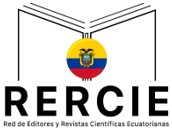The Verbal Art of Siekopai Formulas and Sacred Chants
DOI:
https://doi.org/10.5281/zenodo.8335676Keywords:
Siekopai, Paikoka, oral tradition, formulas, sacred chantsAbstract
Siekopai are one of the fourteen Indian nations of Ecuador. They live in seven communities in the province of Sucumbíos. Although their ancestral language, Paikoka, still shows a high degree of vitality today, the rapidly increasing bilingualism observed among the younger generations together with an accelerated process of acculturation provoked by urbanization and migration to the cities make us foresee a linguistic displacement towards Spanish in the few next generations. As part of Siekopai oral tradition, formulas and sacred chants are among the expressions of native verbal art that run the highest risk of being lost in the short run because the transmission process was suddenly interrupted several decades ago alongside the consumption of yoco and yage. Remembered by a dozen of elders whose average age exceeds 78 years, the formulas and sacred chants were documented for the first time in three Siekopai communities. Through the documentation and analysis of both verbal genres, a typology of formulas and sacred chants was conducted according to form, function, and contexts of use. Awareness-building among bearers of these genres and the communities with respect to the importance of these expressions of Siekopai intangible cultural heritage made it possible to establish basic criteria and general recommendations for a plan to safeguard the formulas and sacred chants.
Downloads
Published
How to Cite
Issue
Section
License
Copyright (c) 2023 Jorge Gómez Rendón, Justino Piaguaje Lucitante

This work is licensed under a Creative Commons Attribution-NonCommercial-ShareAlike 4.0 International License.
INPC, Revista del Patrimonio Cultural del Ecuador provee acceso libre a su contenido digital para lectura y descarga, con el propósito de democratizar el conocimiento y la difusión de la investigación. Se permite el acceso y empleo del material siempre y cuando se reconozca a los autores/as, no se lo use comercialmente y se lo comparta con un criterio similar.
Los autores/as conservarán sus derechos de autor; podrán difundir sus artículos en otras obras impresas o digitales, sitios personales o institucionales, dando crédito a su publicación original en esta revista, reconociendo así su trabajo editorial y potenciando su alcance.








